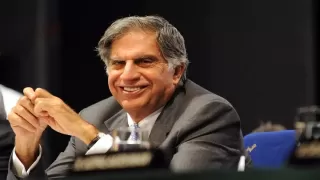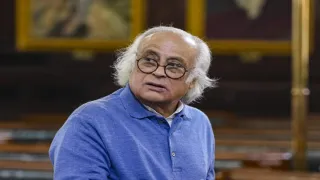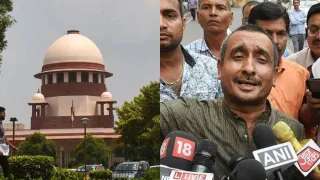The Union Budget 2024–25, which will prioritise national growth and development and have an anticipated total expenditure of Rs 48,20,512 crore, was presented on Tuesday by Union Finance Minister Nirmala Sitharaman. In agriculture productivity and resilience, employment and skill development, inclusive human resource development and social justice, manufacturing and services, urban development, energy security, infrastructure, innovation, R&D, and next-generation reforms are the nine areas where the budget envisions ongoing efforts.
Sitharaman's speech focused on the four key themes of the first budget of Prime Minister Narendra Modi's third government: 'Yuva' (youth), 'Annadata' (farmers), 'Garib' (poor), and 'Nari' (women).
All you need to know about the Union Budget 2024
Awas Yojana (Urban), Jal Jeevan Mission, and the Mahatma Gandhi National Rural Employment Guarantee Scheme are just a few of the centrally funded programs for which the finance minister pledged large funding. Additionally, she unveiled updated income tax slabs that would enable taxpayers to experience a net gain of about Rs 17,500 annually.
What are the important points from the Budget 2024-25?
Total capital expenditure was expected to be Rs 11,11,111 crore, representing a 16.9% increase above the revised estimates for 2023-2024. The effective capital expenditure is anticipated to be Rs 15,01,889 crore, representing an 18.2 per cent increase over the previous year.
The fiscal deficit is predicted at Rs 16,13,312 crore, or 4.9 per cent of GDP, while the revenue shortfall is forecast at Rs 5,80,201 crore, or 1.8% of GDP. The fiscal deficit represents the amount of money borrowed from the market.
The government also granted cash to social areas like health (Rs 89,287 crore), education (Rs 1,25,638 crore), and rural development (Rs 2,65,808 crore).
While defence spending is set at Rs 4,54,773 crore, subsidies (food, fertiliser, and petroleum) are predicted at Rs 3,81,175 crore.
The expected interest payment is Rs 11,62,940 crore.
Revenue collections are predicted at Rs 31,29,200 crore, with net tax revenue to the Centre forecast at Rs 25,83,499 crore. Non-tax revenue is estimated to reach Rs 5,45,701 crore. The overall capital revenues (including loan and non-debt receipts) are anticipated to be Rs 15,50,915 crore.
Big allocations of funds
As part of the rationalisation effort, the government changed income tax slabs to minimise the burden on lower-income earners. A salary of up to Rs 3 lakh is tax-free; between Rs 3 and 7 lakh is 5%; between Rs 7 and 10 lakh is 10%; between Rs 10 and 12 lakh is 15%; between Rs 12 and 15 lakh is 20%; and more than Rs 15 lakh is 30%.
The standard tax deduction was planned to be increased from Rs 50,000 to Rs 75,000, and the family pension deduction from Rs 15,000 to Rs 25,000.
Several centrally sponsored initiatives received significant funding, including MGNREGS (Rs 60,000 crore), PM Awas Yojana (Urban) (Rs 30,171 crore), Jal Jeevan Mission (Rs 70,000 crore), and Pradhan Mantri Gramme Sadak Yojana (Rs 19,000 crore).
The overall transfers to states and union territories with the legislature are anticipated at Rs 22,91,182 crore, up Rs 4,82,766 crore from 2022-2023.
First, a Rs 1,000 crore venture capital fund has been created to boost the space economy and to expand the industry by fivefold over the next ten years.
Sitharaman also recommended reducing the basic customs charge on gold and silver to 6% and platinum to 6.4%. She announced the reduction of basic customs duty on ferronickel and blister copper while raising it to 15% from 10% on certain telecom equipment.
To support businesses, the FM also declared that angel taxes on investors would no longer apply in India. The angel tax was first implemented in 2012 to discourage the creation and utilisation of unreported funds using the subscription of closely held company shares at a price exceeding the fair market value of the firm's shares. However, during the Union Budget of the previous year, which was met with strong opposition from startups, the tax's scope was expanded to include non-resident investors as of April 1, 2024.
The goal of the Pradhan Mantri Janjatiya Unnat Gramme Abhiyan is to enhance the socioeconomic standing of tribal tribes inside the country. In villages with a tribal majority and aspirational districts, the plan would provide saturation coverage for indigenous households. According to Nirmala Sitharaman's speech, this will assist 5 crore indigenous people by including 63,000 villages.
A program to offer internships to one crore young people in five years at 500 of the nation's best enterprises is also included in the budget. An internship allowance of Rs 5,000 per month and a one-time payment of Rs 6,000 are included in this offer.
Particular focus on Andhra Pradesh and Bihar
The Union Budget 2024's emphasis on Andhra Pradesh and Bihar suggested an attempt to maintain the stability of the present NDA government, led by the BJP, by considering numerically strong NDA partners.
Sitharaman stated that the Union government will set up financial support for Bihar through help from global development organisations. Similar to the Kashi Vishwanath temple corridor, the Mahabodhi temple in Bodh Gaya and the Vishnupad temple in Gaya will have corridors. Nalanda and Rajgir will become major tourist destinations.
In addition, the Centre would create a 'Purvodaya' plan for the complete development of Andhra Pradesh, West Bengal, Jharkhand, Bihar, and Odisha. Amaravati, the capital of Andhra Pradesh, is to be developed, and Rs 15,000 crore has been set aside for this purpose.
No focus on rail safety
The Ministry of Railways has been given Rs 2,55,393 crore in the 2024–25 budget, which is Rs 14,126 crore — or 5.8% — higher than it was the previous year. Rs 12,362 crore of the additional allocation would go towards funding safety-related initiatives. Vaishnaw stated that safety measures will be funded with Rs 1.08 lakh crore of the railway budget following the introduction of the budget on Tuesday.
Another significant investment in rail safety is the federal government program known as Rashtriya Rail Sanraksha Kosh (RRSK). The same as in the previous Budget, RRSK has been allotted Rs 11,000 crore this year. Questions are being raised about whether rail safety will receive any priority in the upcoming year in light of this and the fact that Finance Minister Nirmala Sitharaman hardly mentioned the railways in her budget speech (she only used the word 'railways' once, in the context of Andhra Pradesh development works).
Paid internships in top 500 firms
Nirmala Sitharaman, the minister of finance, unveiled new student initiatives, including a new financial assistance program. The government would provide up to Rs 10 lakh to students who have not benefited from its policies and programs so they may pursue higher education at local universities.
Additionally, a program offering paid internships in the top 500 corporations is about to be introduced by the government. According to the Minister, 500 crore youth would benefit from the aforementioned initiative over five years. They will receive a one-time help of Rs 6,000 and an allowance of Rs 5,000 each month.
Gender Budget 2024
The amount allotted by the Union government for the gender budget in 2024–25 increased by 37.33% over the prior fiscal year. There are three components to the gender budget. Part A's programs are exclusively targeted at women, and all of the recipients are female. Women make up about 30–99% of Part B recipients and up to 30% of Part C allocations.
Also Read: Budget 2024: New income tax vs old income tax regime comparison
































